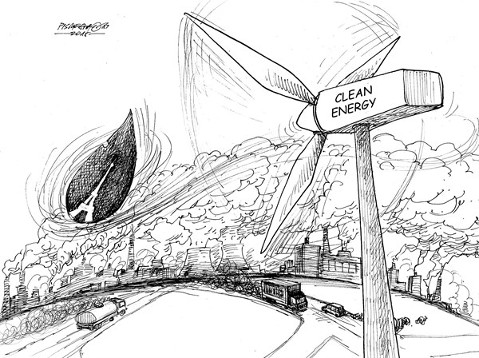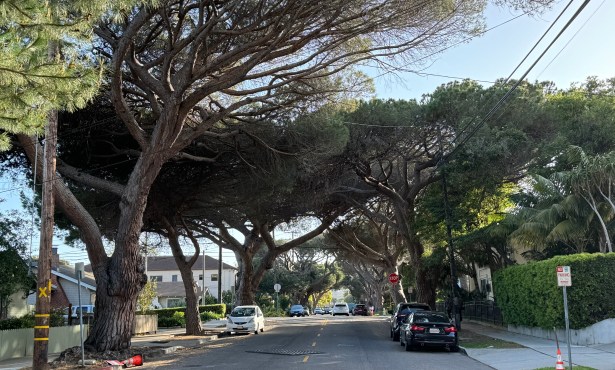Paris Agreement Matters to Santa Barbara
Climate Accord Sets Stage for Clean Energy Economy

Along with millions of people who care about our climate, over the past couple of weeks we have encouraged delegates of the COP21 climate proceedings in Paris to take strong, decisive action to reduce greenhouse gas emissions. What came out of Paris is a historic moment in the fight against climate change: an agreement that will help fulfill our obligation to provide our children and grandchildren with a safe future. For the first time, the world’s countries have agreed to act on climate change and be held accountable for those actions.
Not only does the Paris Agreement put the world on the right path when it comes to protecting our environment, it also protects public health and sets the stage for the development of new renewable energy technologies that will kick America’s clean energy economy into overdrive.
That said, this historic agreement — while a vault forward in the right direction — by no means marks the end of the climate crisis. While 196 countries have submitted plans to reduce emissions, many analysts calculate that even if all pledges are met, the world is still headed toward 2.7 to 3.5 degrees Celsius of warming. This is well above the 2-degree maximum that most scientists say will prevent the worst impacts of climate change — with highly respected climate scientists such as James Hansen strongly urging a threshold of no more than 1.5°C. These may seem like abstract numbers. Yet with just one degree of warming over the past few years, consider the level of historic drought, flooding, super-storms, property damage, and global displacement of refugees that we have experienced around the globe.
But make no mistake: The Paris Agreement is a tremendous win, sending a clear signal that citizens and governments worldwide are ready to take the protection of our climate seriously and move to a clean energy economy.
And it comes on the heels of major progress at the federal level; the Environmental Protection Agency (EPA) recently finalized the Clean Power Plan, which sets limits on carbon pollution from power plants, marking the single greatest step the U.S. has ever taken to combat climate change. And California — the eighth largest economy in the world — recently passed landmark legislation that will increase our renewable energy mix to 50 percent and double the energy efficiency of existing buildings. Even countries like China are looking to California, sending multiple delegations to learn from our state’s efforts on cap and trade and lowering vehicle emissions.
But what does the Paris agreement mean for us in Santa Barbara?
First, it means opportunity. More than anything the agreement makes clear the world is moving to a clean energy economy. And that signal will be heard loud and clear by the markets that impact our energy uses here in Santa Barbara. The wind and solar industries are some of the country’s fast-growing job creators and stand to benefit greatly from this agreement. For Santa Barbara County — which has seen the amount of rooftop solar double in the last three years — an accelerated transition to clean energy is good news. And this growth is expected to continue. The Cuyama Solar Project — the first utility-scale solar farm in Santa Barbara County — will avoid the emissions of 30,000 metric tons of CO2 annually and create 200 construction jobs.
Second, it means clarity on what is left to be done. The sweeping and historic agreement was negotiated thousands of miles away — yet provides us a concrete focus here at home. As the saying goes “all climate change is local.” In other words, much of the actual work to build more efficient buildings, design more bike-friendly neighborhoods, and support more climate-friendly agriculture will take place at the regional level. Our task is not just to reduce greenhouse gas emissions but also to explore how to sequester existing emissions and prepare our coastal and inland communities for climate-related disruptions, some of which are already occurring.
The Community Environmental Council — the organization that brought the tri-county region recycling, electric vehicle charging stations, group purchasing for solar panels, and plastic bag bans — is 100 percent committed to charting a course for a sustainable community.
In the month leading up to the Paris proceedings, we met with elected officials and national thought leaders, including investigative journalist Mark Shapiro and Rear Admiral Len Hering (retired, U.S. Navy) — all of whom had an incredible sense of urgency around the need for clear, immediate local action on reducing greenhouse gas emissions. We met with ranchers, soil scientists, and climate scientists about the incredible potential to sequester carbon on Santa Barbara County’s rangelands. We convened community leaders to tour cutting-edge energy facilities — including a global leader in LED lighting located in Goleta and a state-of-the art facility located in Riverside designed to convert organic waste into bio-methane as an alternative to natural gas.
We came away from these gatherings with hope, not just for how climate efforts are supporting our regional economy but also for human ingenuity. The scientific picture is daunting, and there is no doubt that we have major challenges ahead. Let’s tap that ingenuity, let Paris fill our sails, and vault forward to a clean energy future.
Sigrid Wright is CEO and executive director of the Community Environmental Council and Laura Burton Capps sits as president of its Board of Directors.



